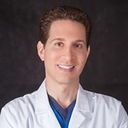I have big jellyrolls eye when im smiling , from what u see in those pic, is that fat or muscle that causes my jellyrolls? And what treatment should i take ?
Answers (6)
From board-certified doctors and trusted medical professionals

Dr. Adam Scheiner, MD
Oculoplastic Surgeon, Board Certified in Ophthalmology
Answer

Dr. James R. Gordon, MD, FACS, FAAO
Oculoplastic Surgeon, Board Certified in Ophthalmology
Answer
Dr. John R. Burroughs, MD
Oculoplastic Surgeon, Board Certified in Ophthalmology
Answer
More Eyelid Surgery Questions
See all Eyelid Surgery Q&AWE SEND PRETTY
EMAILS
What’s trending? Who’s turning heads? Which TikTok myths need busting? We’ve got you. No fluff, no gatekeeping—just real talk. Get our free, unfiltered newsletter.